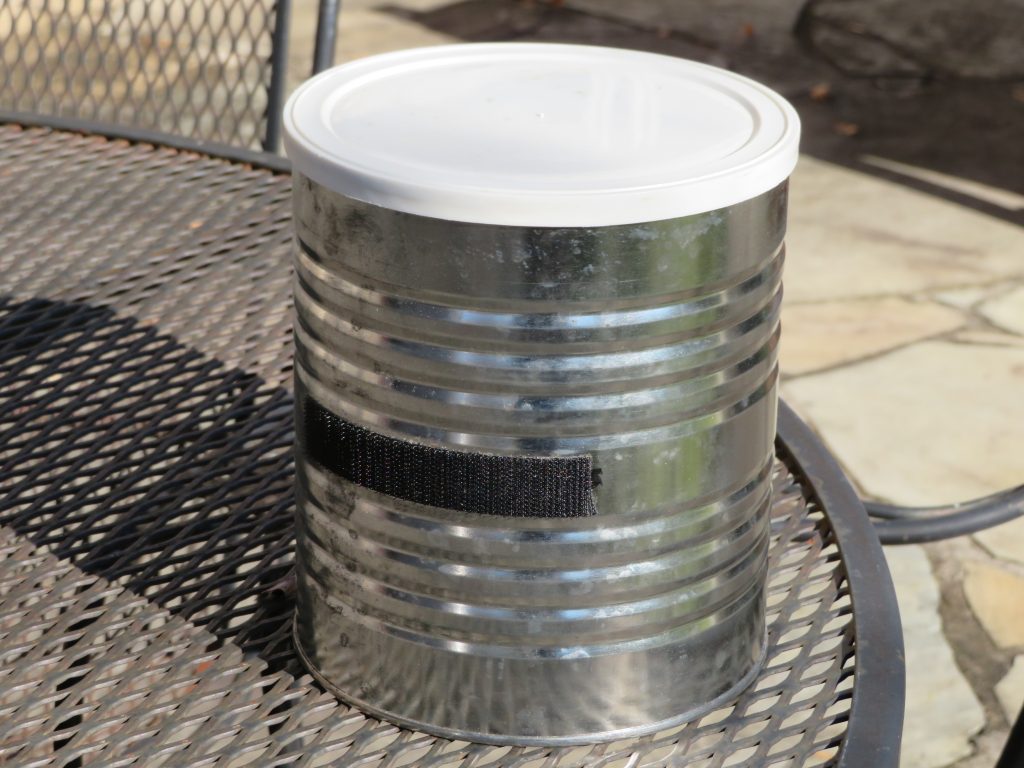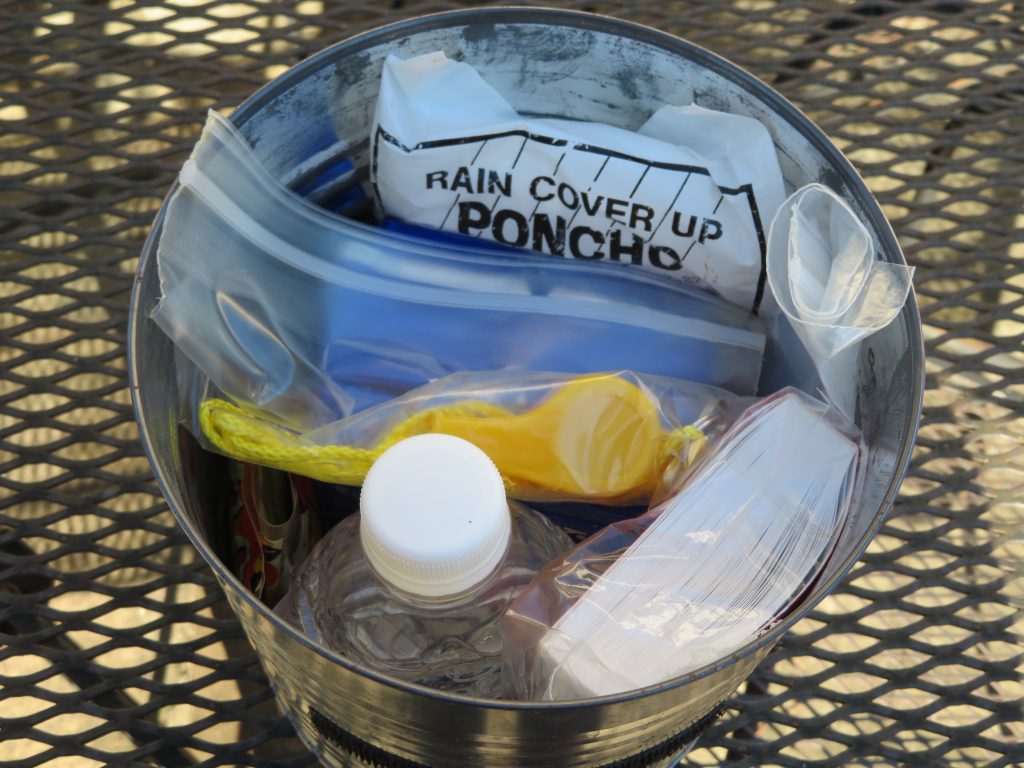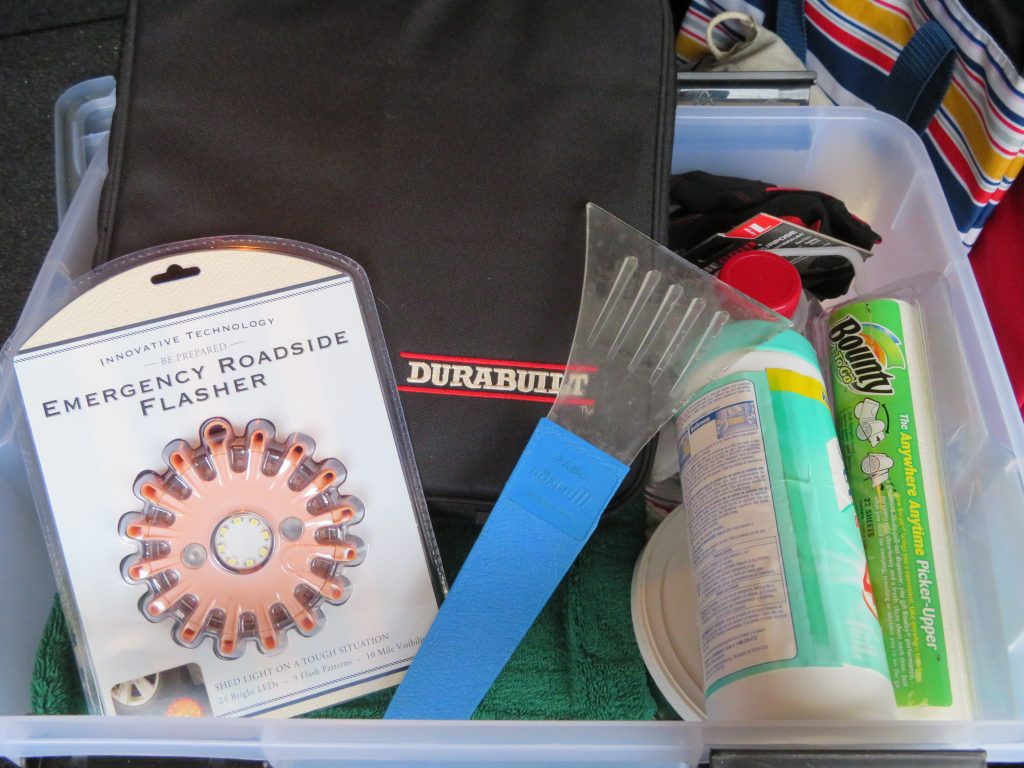There are many varieties of emergency car kits that can be purchased or assembled. What they contain (and whether smaller ones should be part of a larger one) will be determined by how often you drive, where you drive, where you live, your climate, how much trunk or storage space is in your vehicle, and price. Don’t fill your trunk with so many supplies that cargo space is minimized or that gas mileage is affected by the increased weight.
Here are some ideas. Have one or two containers to keep everything from rolling around in the trunk or storage area.
A #10 can with a plastic lid containing the following supplies. Velcro may be glued to the outside so that the can will stick to the carpet on the side of the trunk instead of rolling freely. Include:
- 12 ounces of water
- whistle
- pocketknife or multi-tool
- water-proof poncho
- mylar blanket
- resealable bag
- 3600 calorie food bar
- handwarmers
- Pocket Partner reference book or similar reference book
Additional recommendations:
- Car tool kit (these can be purchased or enlist the aid of a mechanic to determine which tools to include)
- Small first aid kit
- Face masks
- Work gloves
- Jumper cables (and instructions on how to use them)
- Emergency fan belt
- Flares/emergency flasher
- Fix-a-flat (an aerosol spray)
- Duct tape
- Bungee cord
- Rope
- Ice scraper (even if you don’t live where you get snow and ice very often)
- Ground tarp
- Sanitizing wipes
- Toilet paper (one roll flattened in a resealable plastic bag)
- Water
- Small roll of plastic wrapped paper towels
- Bath towel
- Large plastic trash bag
- Old telephone book (for address and phone number reference even if you have a smartphone)
- Small atlas, key map, or local road maps (even if you have a smartphone)
- Reusable shopping bags
All of the above (including the #10 can) will fit into a small rectangular crate or tote in one corner of a car trunk.
Why are some things included on the list?
- A whistle can help rescuers find you in the dark or in a storm.
- A resealable bag to hold open food, broken parts of something, or treasures picked up on a trip.
- Duct tape will fix anything! At least temporarily!
- You’ll be glad you have an ice scraper when you travel south to north and hit an early winter storm or a late spring storm.
- Ground tarp (preferably one made of reinforced fabric) for that spur of the moment picnic, trip to the beach, or covering a broken window.
- Sanitizing wipes and water for the times the kids get so excited they can’t keep their lunch down.
- Water for drinking, cleaning, and radiator emergencies.
- Paper towels (see reasons for sanitizing wipes and water).
- Bath towel (see reasons for ground tarp). Also good for covering and hiding things in the car while on a trip or drying off in a surprise rain storm.
- Trash bags can be used to cover broken windows, protect items that need to be carried outside in a storm, hold wet clothes, or protect carpets and seats from gardening and yard supplies.
In addition to supplies in the trunk, carry the following in the car:
- An umbrella
- A few small emergency food bars (in case you can’t get to the trunk for some reason)
- A flashlight (Check periodically. Heat will weaken batteries.)
- A tire gauge
- A tool for breaking a window if caught in a flood
- Coins for toll roads
- Cell phone charger with secondary USB port
- Proof of car insurance
- Car registration (Even if your state doesn’t require it be kept in your vehicle, many states do.)
- Car manual



